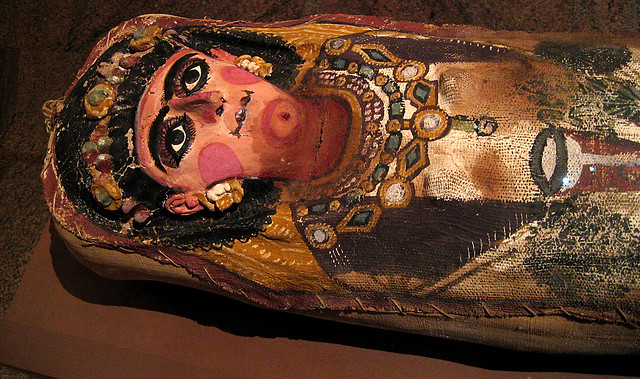
“Numerous burials from the Roman Period were found in the forecourts of the temple of King Mentuhotep II (ca. 2061-2010 b.c.)… The woman’s wreathed head rests upon a gold pillow. Her white tunic has broad black clavi (stripes), and she wears a mantle with greenish black orbiculi (circular ornaments), ornaments popular from the late third century.”
When I went to the Egyptian unit at the Met Museum, I was expected actual, deceased mummified bodies to be on display. I was also expecting sarcophagus upon sarcophagus to be available to us. Unfortunately, all that were available to us were old pottery and little knick-knacks like kitchen cutlery and things that Egyptian women embroidered in their hair. After frantically searching for “mummies” and passing by all the little things, I decided to take my time to read the little descriptions. Little did I know that there was more in this unit than meets the eye. There is so much history behind these little glass protection cases than I thought.
It was very interesting to see how different people hundreds of years lived back then. Many knick-knacks were very similar to things we have today. However, some were too abstract for me to tell right away. This “mummy with a Painted mask Depicting a Woman Holding a Goblet” stood out to me compared to the other things that were in the exhibit. I was amazed at how small this mummy was. I later researched this and found out this was approximately 61 in, about 5 feet. This is unusually small for a woman. Were people back then shorter than us? Is this cover completely irrelevant to the mummified person inside? What was the purpose of drawing on the cover of a mummified person? What did the goblet that the woman was holding representing? Was this person of any significant importance?
This was my first time at the Met and I hope to visit the Met again soon to take a closer look.
Mummies are so mysterious… I love mummies… 🙂



